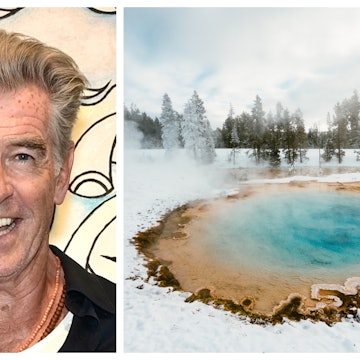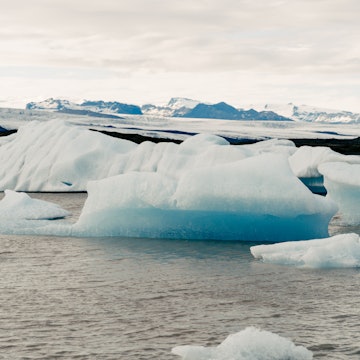

The Laugavegurinn. Sander van der Werf/Shutterstock
Few countries on earth issue such a pure call to explore the wild on foot as Iceland. This landscape – the ice, the lava fields, the gravel trails across grasslands – is best experienced with the ground underfoot and the wind (this being Iceland, it’s often a decidedly cold wind) in your hair.
Iceland’s hikes are a mix of shorter day or half-day walks, as well as multiday treks. The latter tend to be serious undertakings; you’ll need to be self-sufficient, sleeping in mountain huts or your own tent, and we strongly recommend that you have a guide. But the benefits are limitless – it’s the best way to escape Iceland’s tourist crowds.
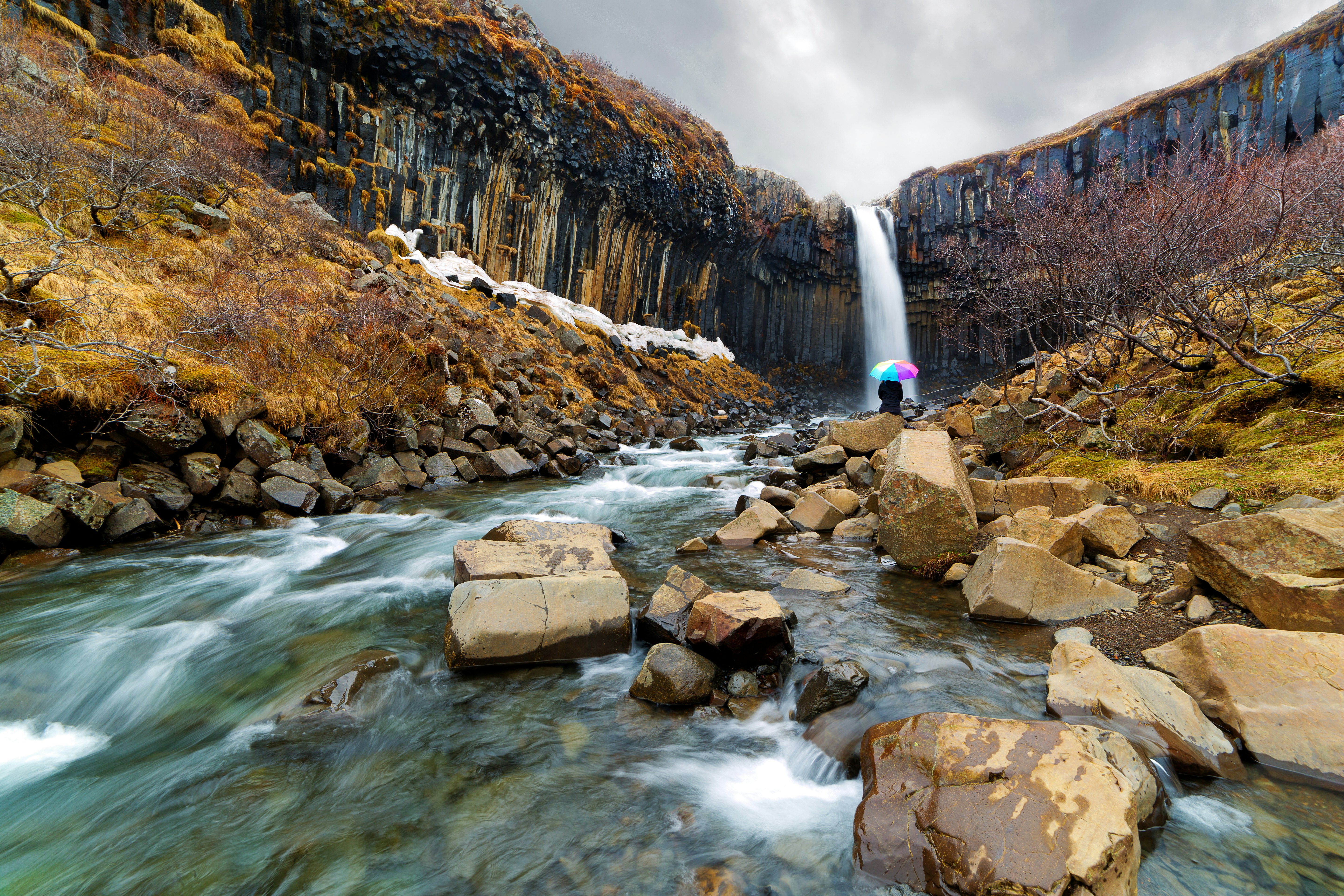
1. Svartifoss and beyond
Best for half-day hiking around Skaftafell
Distance: 5.3km (3.3 miles), 11km (6.8 miles) including Sjónarnípa
Estimated time to complete: 2 hours, 5 including Sjónarnípa
Level of difficulty: easy to moderate
If we had to choose one hike that showcases Iceland in microcosm – and that almost anyone can do – we’d choose this Skaftafell treasure. Skaftafell is one of those places where the Vatnajökull ice cap tumbles off the heights spectacularly close to the Ring Road, and this trail (S2) rises steadily into the foothills from the visitors center.
Even if you’ve seen dozens of Icelandic waterfalls, you haven’t seen anything like Svartifoss. This brooding cascade crashes between black basalt columns formed in the distant past by the cooling and contraction of lava. On your return, if you’re feeling up to it, take the S6 trail – 11km (6.8 miles) return – which runs to Sjónarnípa, with its sweeping views over Skaftafellsjökull.
Return to the S2 and, instead of retracing your steps to the visitors center, head west up the track to Sjónarsker, where most hikers fall silent before the sight of Skeiðarársandura. The vast plain formed by the gravel, silt and sand washed down by the lava from volcanoes past unfurls to the far horizon. On your way back to the coastal plain and visitors center, stop by Sel, a traditional turf-roofed farmhouse.
Planning tip: Parking costs 1040 Icelandic krónur (US$8.40) – pay at the machines in the parking lot or on the Parka app. You can also walk 3.7km (2.3 miles) to the tip or glacier snout of Skaftafellsjökull from the visitors center in an hour.

2. Laugavegurinn
Best long-distance trail
Distance: 55km (34 miles)
Estimated time to complete: 2–5 days
Level of difficulty: challenging
The Laugavegurinn is like one long portal into another world. Stretching from Landmannalaugar to Þórsmörk, it’s a glorious hike, made easier by the presence of mountain huts at regular intervals along the route. But such practicalities are secondary to the sheer magnificence of this trail, which takes you past vividly colored rhyolite mountains and transparent glacier rivers, within sight of some of Iceland’s signature glaciers, and alongside geothermal springs – Laugavegurinn means "Hot Spring Road."
After a relatively easy start from Landmannalaugar, you pass the boiling, seething earth at Stórihver and otherworldly fields of black-as-black obsidian. Beyond Álftavatn, an unfolding glacial panorama includes sightings of pretty Mýrdalsjökull and infamous Eyjafjallajökull, which managed to shut down air travel in Europe for a week in 2010. The trail encounters rivers – you’ll have to ford at least one stream – and ends amid the wildflowers of Þórsmörk; inhale deeply all the way in.
Planning tip: Book your mountain huts months in advance. The Laugavegurinn usually opens in June and closes by mid-September (sometimes earlier).
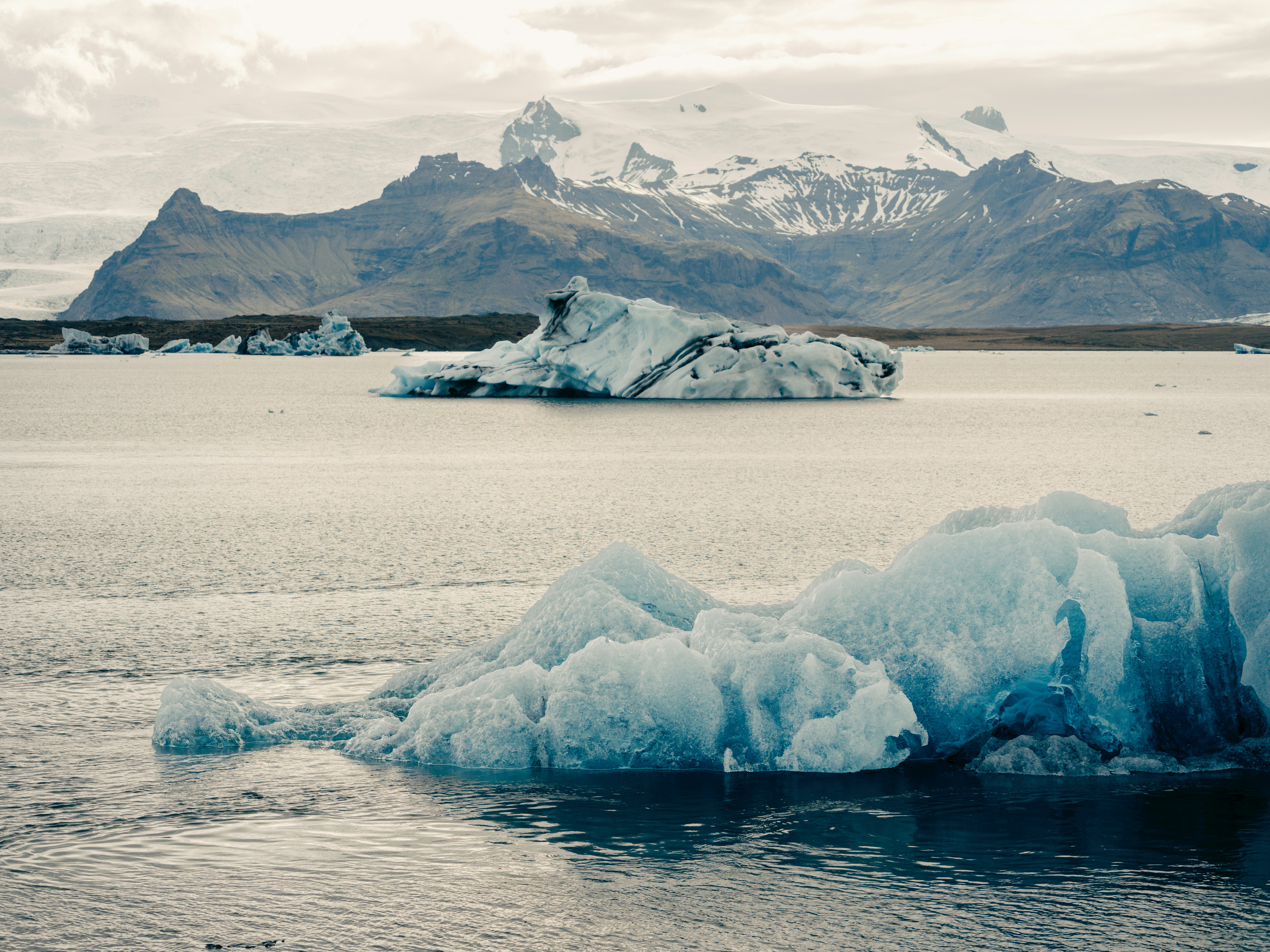
3. Breiðármörk Trail
Best for glaciers and escaping the Jökulsárlón crowds
Distance: 15.3km (9.5 miles)
Estimated time to complete: 4–5 hours
Level of difficulty: challenging
Everyone who visits Iceland finds the iceberg-filled lagoon of Jökulsárlón and the glacier tongue of Breiðamerkurjökull irresistible. But we can count on one hand the number of travelers we’ve met who’ve walked the Breiðármörk Trail. Apart from the beauty – and relative solitude – along the way, the benefits of this route include being one of the longest hikes possible in Iceland without crossing rivers, climbing precipitous mountain trails or mounting a major expedition (although bring plenty of water).
The path begins in Jökulsárlón’s western lot and largely follows the point where the steep-walled mountains of Iceland’s interior meet the flat coastal littoral. Within the first half hour of the walk, you can suddenly hear the silence. The first stop, after 10km (6.2 miles), is Breiðárlón, one of the least-visited glacier-iceberg lagoon ensembles in Iceland. Further on, the hum of tourist traffic slowly returns as you approach Fjallsárlón, a quieter version of Jökulsárlón, but by then the healing power of ringing mountain silence should have worked its magic.
Planning tip: Get a map of the route for 250kr (US$2) at the Skaftafellsstofa vistors center, which doubles as an information center for Vatnajökull National Park, on the outskirts of Kirkjubæjarklaustur.

4. Fjaðrárgljúfur
Best for canyon views
Distance: 4km (2.5 miles)
Estimated time to complete: 1–2 hours
Level of difficulty: easy to moderate
It may be short, but the walk from the lower parking lot to the observation deck at the canyon’s summit is one of suspended anticipation. The steady but rarely steep ascent runs parallel to the main canyon, with the canyon on one side and a flower-strewn grassy hillside on the other. As you climb, there are glimpses of Fjaðrárgljúfur’s magic: a window in one of the mysterious columns of rock that are such a feature of this place, a snatched vision of elemental blue waters, a green riverside far below.
But for the most part, Fjaðrárgljúfur keeps its secrets. Only at the very last minute, from the deck at the canyon’s highest point, does the full splendor reveal itself, with a view down through the defile, as if the landscape’s interlocking pillars had been woven in stone. A waterfall, the stream’s glistening waters, the gasps of awe as each new traveler arrives – Fjaðrárgljúfur really does save the best until last.
Planning tip: For all the talk of the midnight sun, very few visitors see Iceland’s iconic landscapes bathed in the sepulchral half light of a summer’s evening – walk this route late at night and you’ll find it blissfully free of fellow travelers.
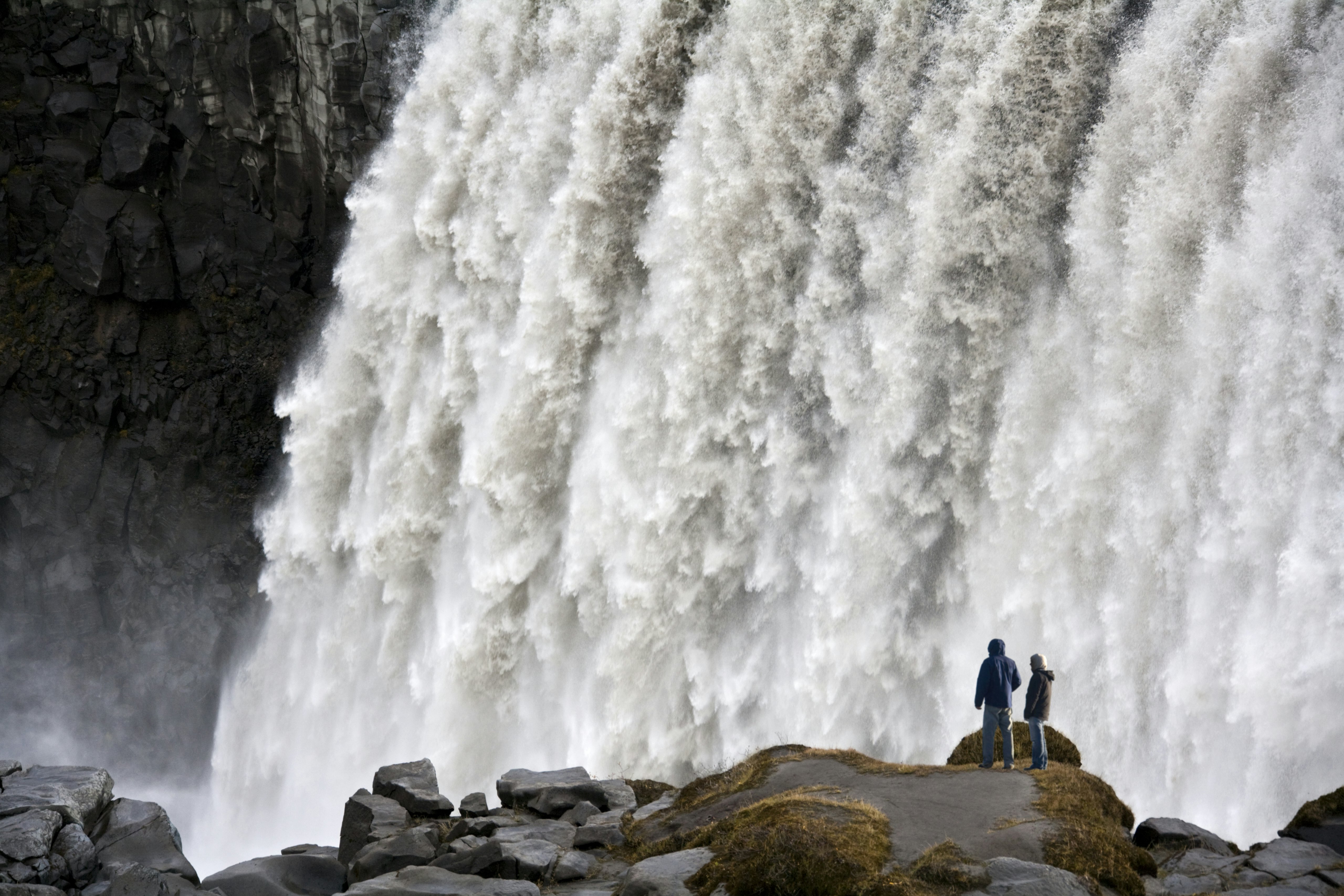
5. Ásbyrgi to Dettifoss
Best for experiencing nature’s power
Distance: 37km (23 miles)
Estimated time to complete: 2 days
Level of difficulty: easy to moderate
In the north of Iceland, walking trails link two of the country’s most significant attractions, taking you all the way through the stunning canyon of Jökulsárgljúfur (in the northern reaches of Vatnajökull National Park).
The path begins at U-shaped Ásbyrgi, surrounded by cliffs 50m (164ft) high. Having explored what can feel like a lost world cut off from the rest of the country, stop by Ásbyrgi's Gljúfrastofa visitors center to pick up maps that will guide you south. But it’s difficult to get lost – the paths shadow the Jökulsá river, taking you through cathedral-like spaces and the valley of Vesturdalur, a pristine place where, local legends assert, the rock pillars are trolls turned to stone when caught by the sun’s arrival. South of Vesturdalur at Hólmatungur, the river channel narrows, creating roiling water and whirlpools. Then it’s on to the waterfalls of Hafragilsfoss. But they’re nothing compared to the raw power of Dettifoss, Europe's most powerful waterfall.
Planning tip: Stick to the west bank of the Jökulsá – the only bridge that crosses the river is near Ásbyrgi in the north, and it’s not possible to cross further south. Check the national park's advice on detours along the way.
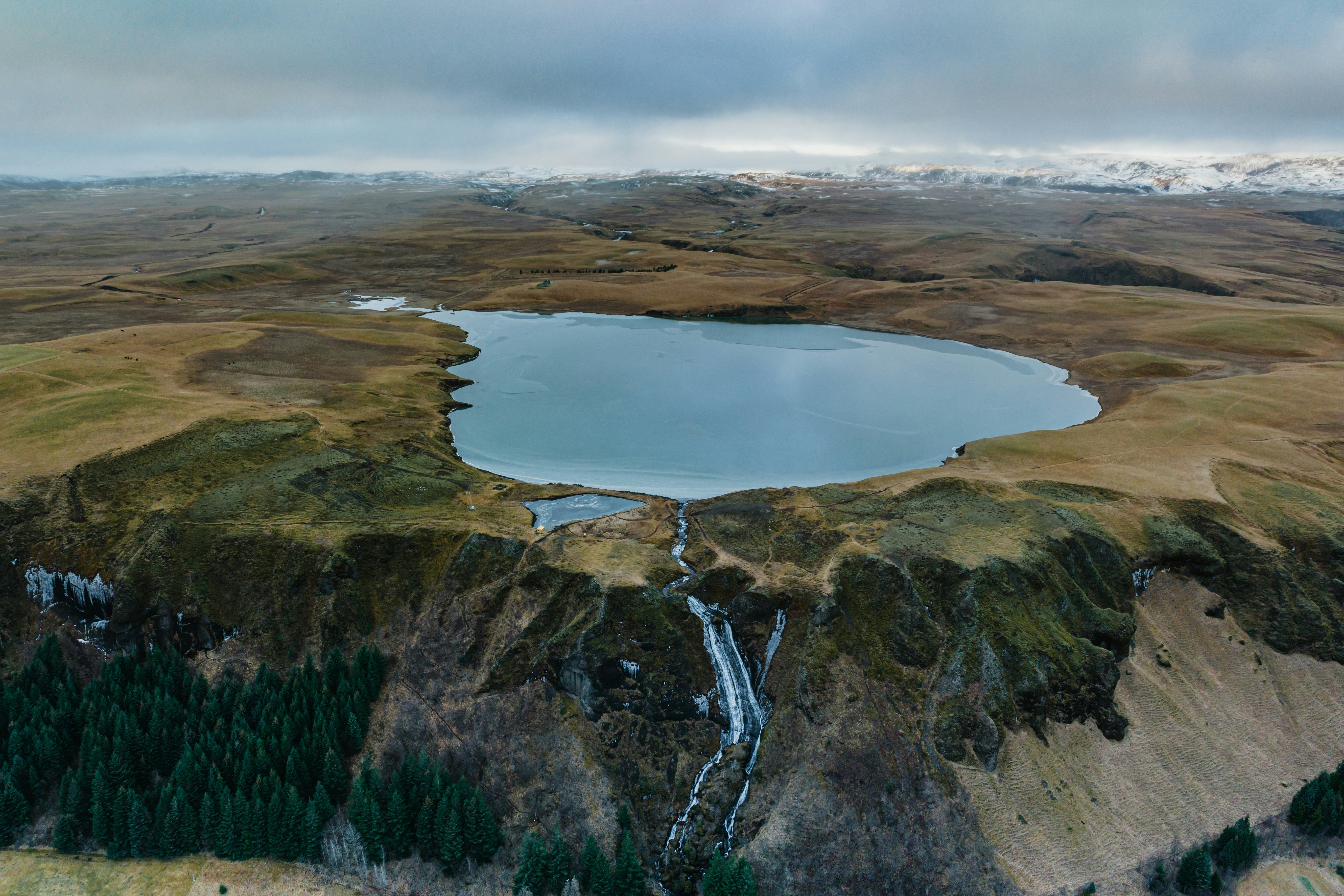
6. Systravatn
Best for solitude and valley views
Distance: 5km (3.1 miles)
Estimated time to complete: 2 hours
Level of difficulty: easy to moderate
By the time you’ve learned how to pronounce Kirkjubæjarklaustur like an Icelander, you’ll have seen most of what there is to see in this small southern town – the striking stone-and-wood Steingrímsson Memorial Chapel, built to honor its namesake’s Eldmessa (Fire Sermon), which saved the town from lava in July 1783. Along this lonely stretch of the Ring Road, even Kirkjubæjarklaustur, home to fewer than 200 souls, can feel like a metropolis.
At the western end of town, the double waterfall of Systrafoss is a handsome cascade and the starting point of the climb out of the valley and up to Systravatn, a haunting high-altitude lake. Up here, you can smell the flowers, hear the birds and enjoy views that, when the sun is shining, can extend all the way to the ice cap of Vatnajökull. Like any fabled place, it has a dark side too. According to local legend, two nuns drowned while bathing here after they watched a hand emerge from the lake adorned with a golden ring; when they reached for it, they were dragged into the depths.
Instead of returning via the same route, take the path down to Kirkjugólf, a natural rock formation that archaeologists once mistook for the ruins of a church.
Planning tip: Skaftárstofa's visitors center sells maps and hiking guides to Vatnajökull, including 10 walks in the Kirkjubæjarklaustur area.
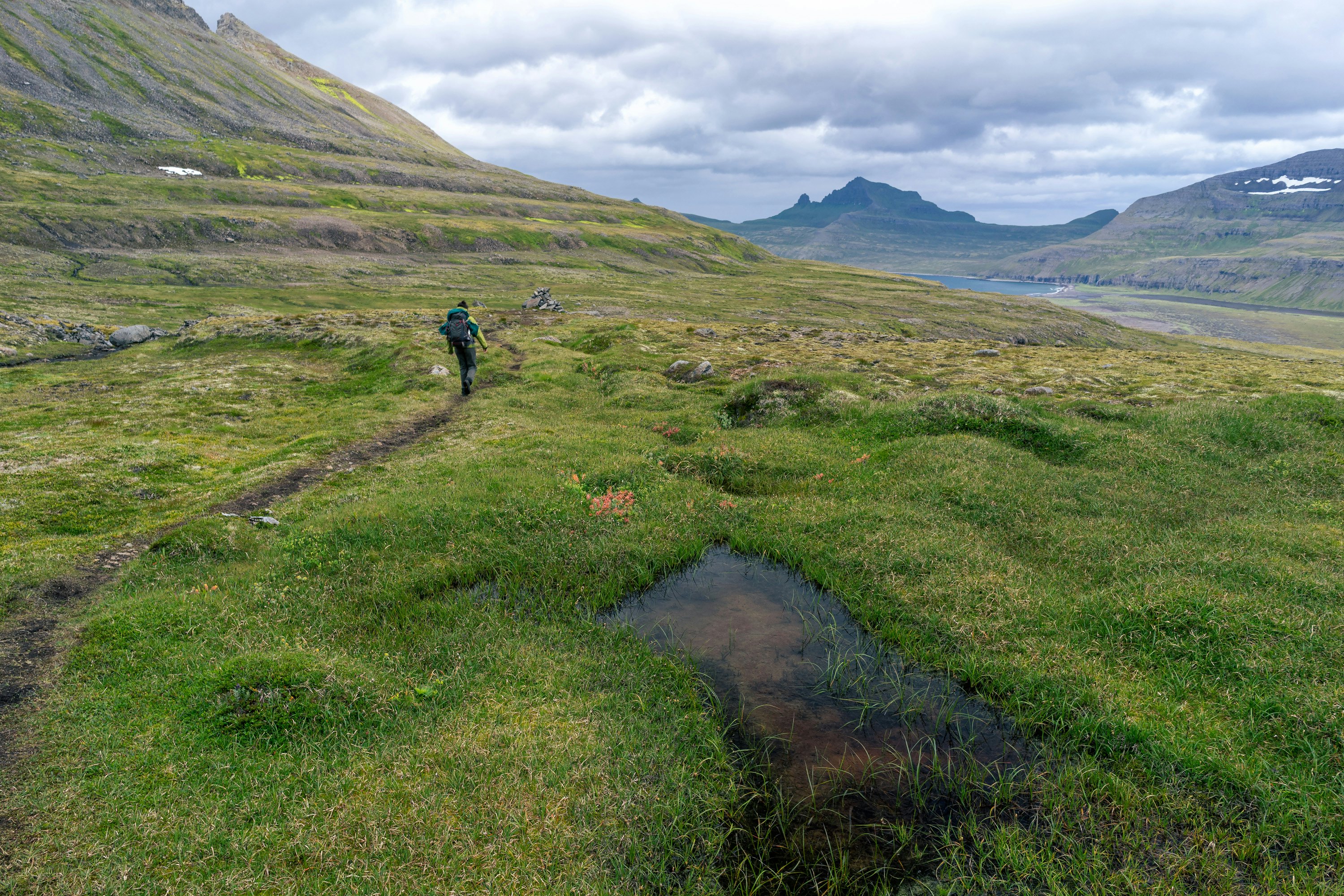
7. Royal Horn (Hornsleið)
Best for wild beauty
Distance: 80km (50 miles)
Estimated time to complete: 4–5 days
Level of difficulty: challenging
Imagine a place so wild that no roads reach it and you have to arrive by boat. Along the coast of the Westfjords in Iceland’s outer west, the Royal Horn (Hornsleið) is a series of trails that offer a genuine wilderness experience along wild and windswept cliffs. This little-known hike takes you through the Hornstrandir Nature Reserve, a world of lonely fjords, emerald-green bluffs and swooping gulls, and easily the best place in Iceland to see an Arctic fox. Possessed of a stark and austere beauty, it is utterly unlike anywhere else in Iceland, and the route is a fabulous way to experience the natural drama of the Westfjords.
Rather than being just one hike, the paths out here can be as short as a day – take a tour out of Ísafjörður – or as long as five; the latter, the authentic Royal Horn, runs from Veiðileysufjörður to Hesteyri.
Planning tip: The visitors center in Ísafjörður can help with advice, practical information and maps, and it has a small exhibit on the Arctic fox. Hornvík and Hesteyri are the two main base camps, staffed by a lone ranger.
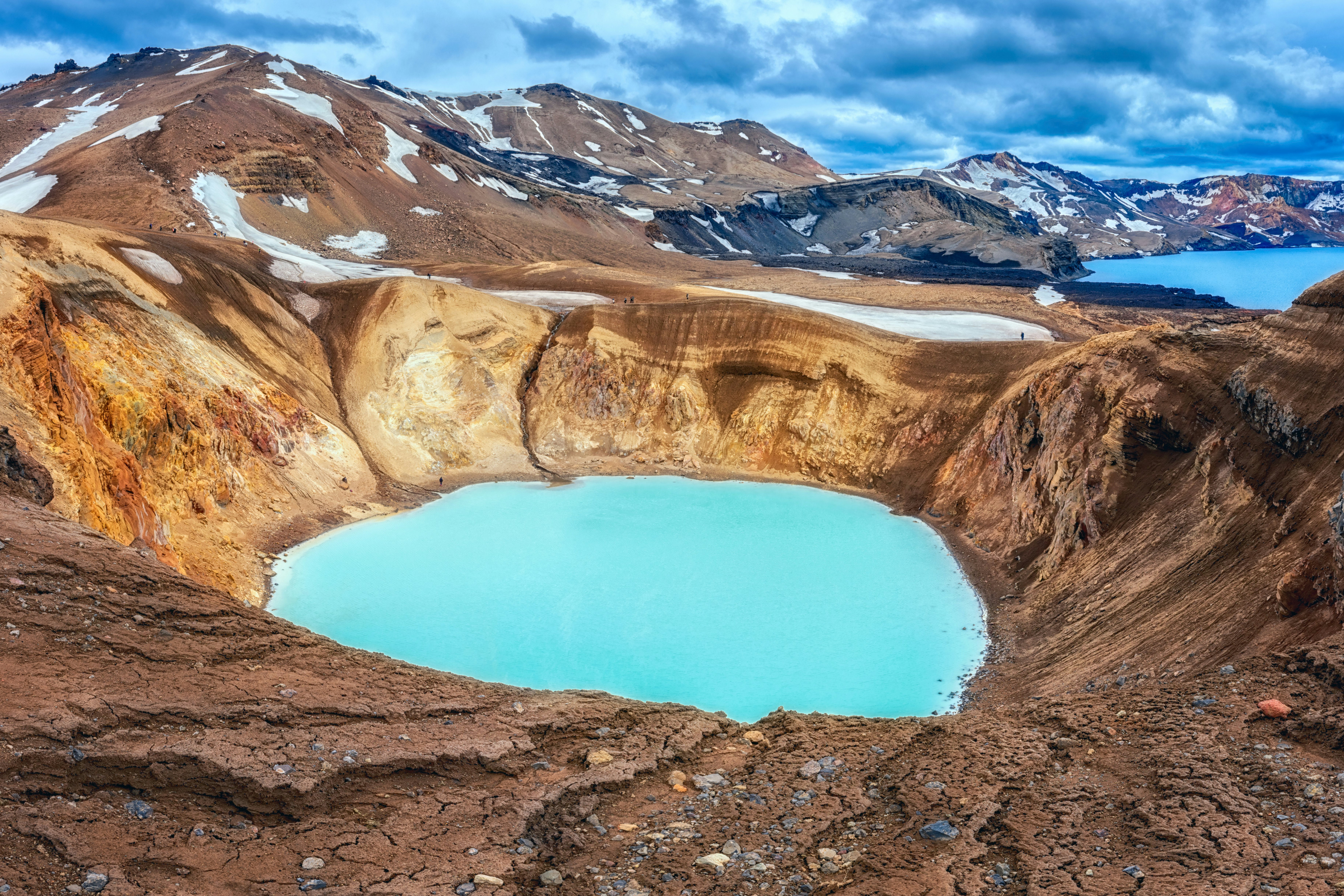
8. Askja Caldera
Best for volcanic splendor
Distance: 5km (3.1 miles)
Estimated time to complete: 2 hours
Level of difficulty: moderate to challenging
You’re spoiled for choice when it comes to hiking the storied interior of Iceland’s Highlands region. Local legends from centuries past tell of fugitives and mythical creatures all across this sparsely inhabited realm where trails cross lava fields, climb volcanoes and spend time amid the lush oasis of Herðubreiðarlindir, with its green moss, angelica and the pinky-purple flowers of Epilobium latifolium (a type of evening primrose also called dwarf fireweed). You can even climb Herðubreið, which Icelanders call Queen of the Mountains.
But we’ve chosen the Askja caldera. Only a volcano could have created such a place. Unless you’ve chosen to hike the 8km (5 miles) from the F910 from Drekagil, the trail begins at the main Askja parking lot. From there it’s a superb walk into and through the volcanic caldera. You crunch a lava field strewn with sienna and magenta stones to Víti, a vent that opened up during an eruption, causing a tephra crater that is now filled with geothermal waters. The cerulean waters of Öskjuvatn are usually swimmable – a truly surreal experience with awe-inspiring views.
Planning tip: The good folks at Möðrudalur, Iceland’s highest altitude farm and just 8km (5 miles) off the Ring Road, run jeep and hiking tours, including to Askja and Herðubreið, which are accessible only in a 4WD.
Tips for hiking in Iceland
Hiking in Iceland is usually only possible from June to September, depending on conditions. In some years, trails may open as early as May and stay open into early October, or they may not open until July and close in August.
Iceland is known for its potentially extreme weather, which change rapidly and without warning, even in summer. Come prepared for all conditions, and always notify someone before setting out on a longer hike.
Check for possible hazards at SafeTravel; the SafeTravel app can help you send your GPS location to 112 emergency services.
Glacier hiking – which we don’t cover here – involves walking onto one of Iceland’s glaciers. Never attempt this on your own, and only undertake glacier hiking with an accredited guide and the necessary safety equipment.








